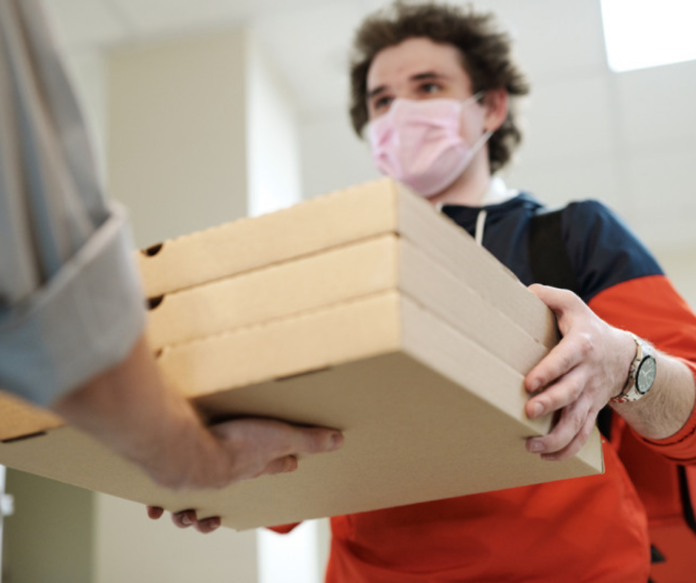When we hear of the online food ordering services, one thought that always comes in everyone’s mind is that “when was it ordered first?”.
It was “Pizza Hut” in 1994 who delivered pizza online. Then came the delivery sector boom for online food ordering when the first online food ordering service, “world wide waiter” (now known as waiter.com), was founded in 1995.By the late 20 CE, major pizza chains had already created their own applications on online platforms and started doing 20-30 percent of their business online.
with increased smartphone penetration and emergence of social media apps and services, the growth of food delivery companies, apps and startups redefined the economy, provided jobs to unemployed as well as side jobs to students.
There are many types of food ordering, some of the few are Restaurant-controlled, Independent, Food cooperatives, Food riders and drivers, Ghost kitchens also known as “cloud kitchens”, to fill the need for inexpensive kitchen space to handle the increased volume with no bricks-and-mortar presence.
Thereafter, comes India’s prominent “Dabbawallas” are people whose job is to deliver lunch to people on time to people at work in corporate(majorly) in India for more than 50 years, especially in Mumbai and Kolkata. The lunch is picked up in the morning, delivered through bicycles and rail trains, and returned empty in the evening. It is a kind of tiffin service seen only in India.
Furthermore, when we see food delivery service in abroad there is a term called dark store or dark supermarket or dotcom Centre. A dark store is a large type warehouse which is used to facilitate a “click and collect” service. They are often found in the suburban areas or on the outskirts. They take advantage of affordable nearby real estate and easy road accessibility. This type of format was initiated in the United Kingdom and then adopted by France and then USA.
Success defining steps in food delivery of current generation are-
• Delivery Time-It is the crux and speed of delivery is the biggest reason in consumer satisfaction. No one wants to eat soggy burger and fries.
• Discounts on Meals- As a natural human behavior everybody loves coupons, cashbacks and deals. It is a win-win situation for customers and service provider.
• Sanitization and Health Concerns-Meals that are generally made for home and delivered fresh and hygienic with safety and care.
• Management and Supply of orders- Orders spike on weekends. Order concepts like Delivery with robots, Delivery of grocery items, Contactless delivery, Order by car and smartwatch, Delivery with drones, Delivery with parachute, Pet food apps, virtual kitchen apps and what not.
Online food delivery is very soon to becoming a 200-billion-dollar industry according to Forbes. The mantra for it for now is the innovation to succeed as everyone is entering the space and increasing competition means growth as well as the survival of the fittest. In the coronavirus pandemic when the lockdown was imposed globally, the food ordering industry was a total game changer and no brainer for customers contact-free to use of prepaid payment method.
One needs to have robust social media network, good quality of product for sale and not a brick and mortar structure to showcase their goods and services. It is a gainful scenario for both the seller and the customer to enter online food ordering platforms as the cost associated with a physical structure is not affected by either. For instance-Zomato, Uber Eats, Swiggy, Doordash and what not.
Then, Comes the gloomy side of online order are accessibility, confusing menu, volatile price model, customer expectation and most importantly work life balance of the food delivery boy apart from his almost 24X7 hectic schedule to deliver orders on or before time. Tampering of food and delivery executives not delivering the order on time is also very concerning.
In the End, I’d like to conclude by saying that “Gone are the days and times when people used to pay a visit to restaurant, call the waiter to place their order, ask him about the menu and then eat in a fine dine area.”
Nowadays, the process is much more streamlined and straightforward and it is expected that physical restaurants will continue to diminish at a rapid pace, because of planning and efforts involved in running a physical restaurant are complicated, monotonous and sluggish when it comes to timing.
They might tweak to self-service, order via app/QR codes. It is also said that it gives customer freedom of choice, it saves a lot of time. But what about the food delivery boy’s health insurance except being paid in wages for every day? What about his health and mental state when he rushes to deliver the order on time breaking maximum traffic rules to avoid the delay? There are infinite reasons but only some expectancy that it will be fine in the near future.










